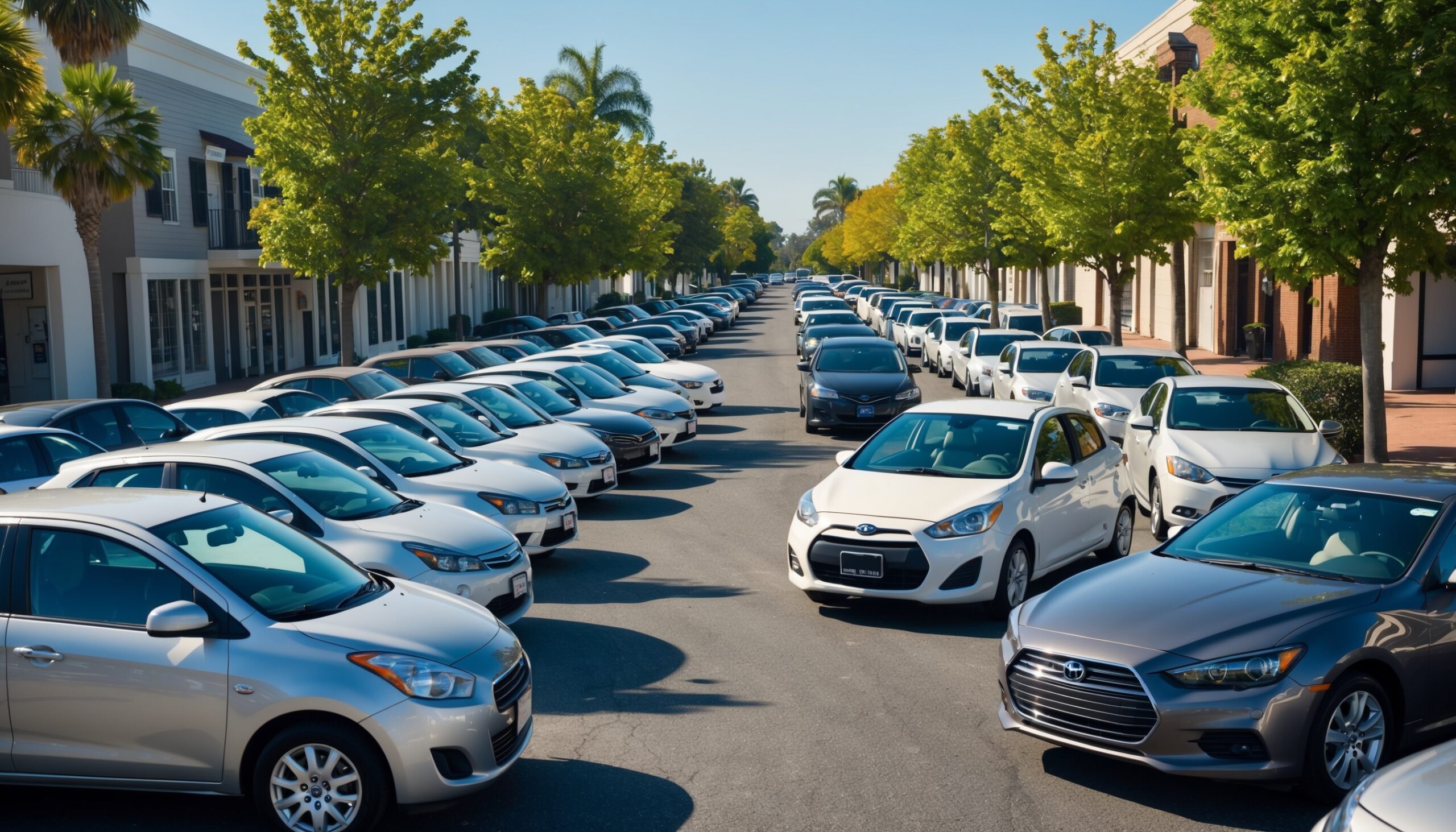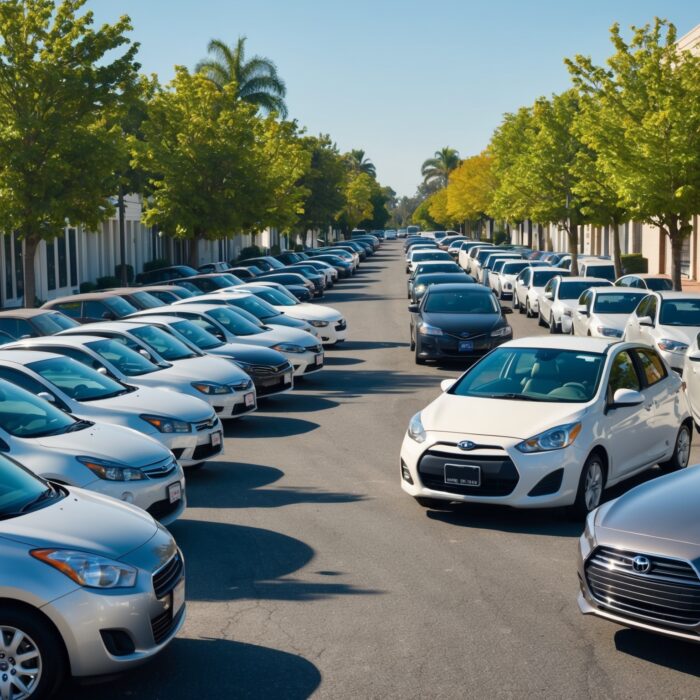Why Did So Many Cars Switch From Manual To Electronic Parking Brakes?
In the world of automotive engineering, change is the only constant. Over the years, we’ve seen a plethora of advancements that have made our driving experiences safer, more efficient, and a lot more enjoyable. One such change that has gained traction in recent years is the shift from traditional manual parking brakes to electronic parking brakes (EPBs). But why did this transition happen, and what does it mean for car enthusiasts and everyday drivers alike? Buckle up as we explore the ins and outs of this fascinating evolution!
The Evolution of Parking Brakes
To fully appreciate the transition to electronic parking brakes, it’s essential to understand the history and mechanics of traditional manual parking brakes. These brakes, often referred to as handbrakes or emergency brakes, have been a staple in vehicles for decades.
The Traditional Manual Parking Brake
Manual parking brakes typically consist of a lever located between the front seats. When engaged, the lever pulls on a cable that activates the rear brakes. This simple mechanism has been reliable and effective for many years, but as cars became more sophisticated, manufacturers began to see the potential for improvement.
What Prompted the Change?
As vehicles evolved, so did the expectations of consumers. Here are some key factors that spurred the shift towards electronic parking brakes:
- Space-Saving Designs: With the rise of compact vehicle designs, manufacturers sought ways to maximize interior space. Manual parking brakes take up valuable real estate in the cabin, while EPBs can be designed with a much smaller footprint.
- Advanced Safety Features: Modern vehicles are equipped with a multitude of safety technologies. EPBs can be integrated with other systems, such as automatic braking and hill-start assist, enhancing overall safety.
- Ease of Use: Engaging and disengaging a manual parking brake requires physical effort, which can be cumbersome for some drivers. EPBs operate at the push of a button, making it a more user-friendly experience.
- Technological Integration: As we move into an era of smart technology, car manufacturers are keen on incorporating systems that can communicate with each other. EPBs can be integrated with the vehicle’s electronic systems for smoother operation.
The Mechanics of Electronic Parking Brakes
Now that we’ve established why the switch has occurred, let’s dive into how electronic parking brakes work. Understanding the mechanics of EPBs can give you a newfound appreciation for this innovation!
How Do Electronic Parking Brakes Work?
At their core, electronic parking brakes use electric motors to engage and disengage the rear brakes. Here’s a breakdown of the basic components:
- Control Module: This is the brain of the operation. The control module receives input from the driver (via a button) and sends signals to the electric motors.
- Electric Motors: These motors are responsible for applying the brake pads against the rotors when the parking brake is engaged. They’re typically located at the rear wheels.
- Sensors: EPBs often come with sensors that monitor the status of the brakes and can adjust the system accordingly. For example, if the vehicle is on an incline, the system can automatically engage the brakes to prevent rolling.

The Benefits of Electronic Parking Brakes
The transition to electronic parking brakes isn’t just a trend; it comes with a slew of benefits that make them more appealing than their manual counterparts. Here are some of the advantages:
1. Enhanced Safety
One of the most significant benefits of EPBs is the added safety features they bring to the table. Many modern vehicles with EPBs are equipped with:
- Auto Hold: This feature keeps the brakes engaged even when the driver takes their foot off the brake pedal, preventing unintentional rolling.
- Integration with Stability Control: EPBs can communicate with the vehicle’s stability control system, ensuring maximum braking force is applied when needed.
2. Convenience
Let’s be honest—using a manual parking brake can sometimes feel like a chore. EPBs simplify the process, making it as easy as pressing a button. This is particularly beneficial in stop-and-go traffic, where constant engagement and disengagement of the handbrake can become tiresome.
3. Space Efficiency
As mentioned earlier, EPBs take up significantly less space than traditional handbrakes, allowing manufacturers to design vehicles with more innovative layouts. This opens up possibilities for additional storage compartments or even a more spacious cabin.
4. Maintenance and Reliability
While manual parking brakes require regular maintenance to ensure the cables remain taut and functional, EPBs are generally more reliable. They’re less prone to wear and tear, as they don’t have mechanical linkages that can stretch or break over time.
Also Read: Why Did So Many Cars Switch From Manual To Electronic Parking Brakes?
The Downsides of Electronic Parking Brakes
While electronic parking brakes come with a host of benefits, they aren’t without their drawbacks. It’s essential to consider both sides of the coin:
Also Read: Why Did So Many Cars Switch From Manual To Electronic Parking Brakes?
1. Complexity and Cost
As with any technology, the more complex a system is, the higher the potential for something to go wrong. If an electronic parking brake malfunctions, it can be more challenging and costly to repair than a simple mechanical system.
2. Driver Dependency
With the convenience of a button, some drivers may become overly reliant on the system, neglecting the skills needed to operate a manual parking brake. This could be problematic in emergency situations where a quick manual engagement is necessary.
3. Limited Feedback
For car enthusiasts, one of the joys of driving is the tactile feedback from mechanical components. The sensation of pulling a handbrake can be exhilarating, especially in performance driving situations. EPBs lack this engaging feedback, which may disappoint some driving purists.
The Future of Parking Brakes
So, what’s next for parking brake technology? With the automotive industry moving towards greater automation and electric vehicles, we can expect to see even more innovations in parking brake systems. Here are a few possibilities:
- Integration with Autonomous Driving: As self-driving cars become more prevalent, parking systems may evolve to operate automatically, engaging and disengaging the brakes based on the vehicle’s surroundings.
- Advanced Sensors: Future EPBs may utilize even more sophisticated sensor technology to enhance safety and performance, adapting to various driving conditions in real-time.
- Wireless Technology: Imagine a parking brake system that doesn’t rely on physical connections. Wireless technology could lead to more streamlined and efficient brake systems in the not-so-distant future.
Conclusion
The shift from manual parking brakes to electronic parking brakes is a reflection of the automotive industry’s commitment to innovation and safety. While traditional handbrakes have served us well over the years, the benefits of EPBs—such as enhanced safety, convenience, and space efficiency—make them an appealing choice for modern vehicles. As technology advances, we can only anticipate more exciting developments in this area, ensuring that parking brakes continue to evolve alongside the vehicles they serve.
At Torque Feed, we’re passionate about keeping you informed on the latest automotive trends and innovations. Whether you’re a die-hard car enthusiast or just a casual driver, understanding these changes can enhance your appreciation for the vehicles we love. So, what’s your take on electronic parking brakes? Are you on board with the shift, or do you prefer the classic feel of a manual handbrake? Let us know in the comments below!












